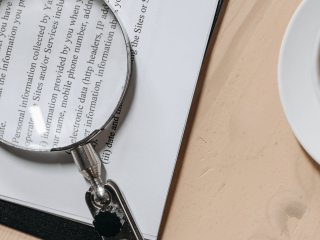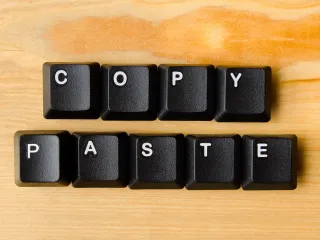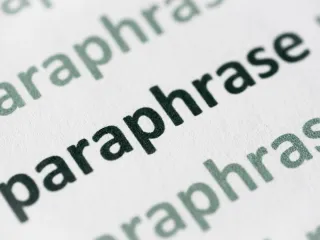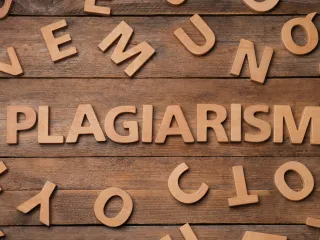Text citations may not seem important, but they are an essential element for any reputable research paper.
Investigating a topic and presenting data about it involves giving credit where it is due. There is nothing wrong with borrowing information from other sources, but to avoid plagiarism in your work, make sure to acknowledge the original authors of any concepts or ideas that are not yours.
Living in a digital age means that more information is being made available as Portable Document Format (PDF) files. This popular digital format allows researchers to access comprehensible information from old and new books, magazines, newspapers, and more if physical copies are hard to find or inevitably disappear with time.
PDF files are not considered to be a type of source, which can be confusing for citation purposes, but in reality, they are treated very similarly to books or articles. To cite a PDF correctly, you must first determine what type of source exists in the file. If you are referencing a PDF of a journal article, then you should acknowledge it as a journal article.
Knowing what kind of source you are working with will also help you choose the proper citation style for the PDF document. The three most common citation formats are MLA, APA, and Chicago style, and experts from many fields usually stick to one of those.
Professionals in the humanities fields, such as biology, languages, and philosophy, often prefer MLA style citations. Those in the social sciences, like psychology, criminal justice, and education, tend to favor the APA format. Experts in history and fine arts frequently prefer Chicago style.
The citation style you use will determine whether you should add an identifier to the citation that specifies that the source was found as a PDF.
Many sources also have a Digital Object Identifier, or DOI, which serves as a unique, permanent webpage. The preferred format for DOI’s in any citation style is the following: https://doi.org/xx.xxxx/xxx.xxxx.xxxx.
In-text Citation Structure
One of the best ways to show readers where you got your information from is by using in-text citations that don’t disrupt the flow of content in your work. To add credibility to your research paper, make sure to include them next to any bit of information that you are borrowing from others, such as images, quotes, and paraphrased ideas.
In-text citations are intentionally brief to avoid distractions while reading a project and usually consist of the author’s last name, a page number, and the year the source was published. More information about each source should be available in a Works Cited, Reference list, or Bibliography page.
It is essential to know that each citation style comes with its own set of rules for structuring in-text citations. Read along to learn more about the differences between APA, MLA, and Chicago style and how to apply them to your work appropriately when citing a PDF.
MLA Style
MLA style citations don’t require PDF identifiers or access dates for dateless articles. In-text citations for MLA include the author’s last name and a page number in parentheses, with more information about each source available in a works cited list. Since DOI’s are unique to every article and never change, students are encouraged to include them in their MLA citations if available.
You can show in-text citations as prose or parenthetical citation for MLA style. Here are examples of both.
Citation in prose
Here’s an example of how citation in prose works for MLA style:
Goodnow states that polyphonic texts contain two or more voices, or perspectives, within themselves (18).
The example above shows the author’s last name included in the sentence and shows that the idea being borrowed can be found on page 18 of her book. In this case, only page numbers would be in parentheses.
Parenthetical citation
Here’s an example of how parenthetical citation works for MLA style.
It is possible that “polyphonic texts contain within themselves two or more voices, two or more perspectives” (Goodnow 18).
Since we don’t find the author’s last name in the sentence, her last name and page number appear in parentheses at the end. Notice that there is no comma between them.
Works cited
Make sure to fully understand the formatting rules for the Works Cited page required by MLA style at the end of your research paper. This page should include any other information that can help the reader track down the source, like the article’s title, publisher, and date of publication. A title page is not required, and your last name and page number for your research paper should be included in the running head section.
The following example will show you how to cite a PDF document on the Works Cited page:
-
Goodnow, Katherine J. “Kristeva in Focus: From Theory to Film Analysis.” Berghahn Books, 2010. https://books.google.com/books?id=htfP2aT6BrUC&printsec=frontcover#v=onepage&q&f=false
Notice that they placed the book’s title in quotation marks and capitalized every major word in it.
APA Style
Citations are slightly different for APA style. APA 9 requires a comma in between the author’s last name and the year of publication for in-text citation. The reference list entry at the end of your research paper should include more information about the source, like the full title and a URL address for it. You should always include DOIs when available.
In-text citations in APA style can also be in prose or parenthetical. With this format, most prefer the Author-Date citation system.
Citation in prose
Here’s an example that shows how APA requires writers to use citations in prose:
Kalat (2016) argues that amateur investigators had already gained a good amount of knowledge long before universities considered those fields as worthy areas of study.
They included the author’s last name in the sentence. Only the date should appear in parentheses next to it.
Parenthetical citation
This example will show you how to use parenthetical citation in APA correctly:
“Long before any people called themselves scientists, and long before the universities began to include the fields as worthy areas of study, the amateur investigators had accumulated a great deal of knowledge” (Kalat, 2016).
In the example above, they borrowed a direct quote from a book. Write both the author’s last name and year of publication in parentheses right next to the quote to cite it correctly. Notice that the last name and year are separated by a comma this time.
References
Unlike MLA, which has a Works Cited page, APA requires you to show complete information for sources on a Reference list entry. You need a title page for this section, and only a page number should be included in the document’s running head. APA also requires titles to be written in sentence case, meaning that only the first word and proper nouns will be capitalized.
The example below will show how sources should be cited in the References list for APA:
-
Kalat, J.W. (2016). Introduction to psychology. Cengage Learning. https://www.google.com/books/edition/Introduction_to_Psychology/EcsaCgAAQBAJ?hl=en&gbpv=1&printsec=frontcover
His first and middle initials follow the author’s last name, and the date of publication should be placed next to it in parentheses. Only the first word in the title is capitalized, and the publisher is written in italics.
Chicago Style
In-text citations for Chicago style tend to rely on either the notes and bibliography system or author-date system. One system uses numbered notes while the other one puts references in parentheses, but both share the same purpose to guide the reader to other sources. Read on to learn how to use both systems correctly for Chicago style.
Notes and bibliography
Most experts in the humanities fields typically prefer this system and use footnotes or endnotes for in-text citation. A raised superscript number in the text corresponds to each note that should help the reader find more information about that source in the bibliography. Here’s an example:
For within this pervasive allegory, as James Clifford points out, “The non-Western world is always vanishing and modernizing. As in Walter Benjamin’s allegory of modernity, the tribal world is conceived as a ruin.”²
The raised superscript number in the text should correspond to that same number in the bibliography. This is how that citation should look in your research paper’s bibliography:
2. Clifford, James. Histories of the Tribal and the Modern. PDF file. 1985. https://monoskop.org/images/e/eb/Clifford_James_1988_Histories_of_the_Tribal_and_the_Modern.pdf.
The author’s last name comes first, followed by his first name, and the source’s title is italicized. When using Chicago style citation, the PDF identifier should always be placed directly after the source title.
Author-date system
The author-date system is mostly used by experts in the social sciences fields and briefly cites a source in the text using a set of parentheses. The author’s last name and year of publication should be inside the parentheses. This citation should match with an entry in the bibliography that provides more information about the source. This example, using the same source as the one above, will show you how to use the author-date system correctly:
For within this pervasive allegory, as James Clifford points out, “The non-Western world is always vanishing and modernizing. As in Walter Benjamin’s allegory of modernity, the tribal world is conceived as a ruin” (Clifford, 1985).
Notice that the author’s last name is separated from the publication date by a comma. Just like citing sources with the notes and bibliography system, the in-text citations should match up with an entry in the bibliography. This is how that citation would look on the bibliography page:
-
Clifford, James. Histories of the Tribal and the Modern. PDF file. 1985. https://monoskop.org/images/e/eb/Clifford_James_1988_Histories_of_the_Tribal_and_th e_Modern.pdf.
As you can see, it looks similar to the one from the notes and bibliography example. Since that example wasn’t using footnotes, you don’t need to start with a number that matches the citation. Just like in the notes and bibliography example, the PDF identifier should also be placed right after the title.
Citing a Journal Article
We should always include details like the volume, issue number, and the journal’s name when citing a journal article in a PDF file. Here are examples that will show you how to cite the same PDF journal article for the three most common citation styles.
MLA
Rasmussen, Leslie. “Parasocial Interaction in the Digital Age: An Examination of Relationship Building and the Effectiveness of YouTube Celebrities.” The Journal of Social Media in Society, Vol. 7, No. 1, 2018. pp. 280-294. https://www.thejsms.org/index.php/JSMS/article/view/364/167
APA
Rasmussen, L. (2018). Parasocial interaction in the digital age: An examination of relationship building and the effectiveness of YouTube celebrities.” The Journal of Social Media in Society, Vol. 7, No. 1. pp. 280-294. https://www.thejsms.org/index.php/JSMS/article/view/364/167
Chicago Style
Rasmussen, Leslie. Parasocial Interaction in the Digital Age: An Examination of Relationship Building and the Effectiveness of YouTube Celebrities. PDF file. 2018. The Journal of Social Media in Society, Vol. 7, No. 1. pp. 280-294 https://www.thejsms.org/index.php/JSMS/article/view/364/167
Wrap Up
Conducting research can be time-consuming and Quetext’s built-in citation generator can save you stress by providing quick and accurate citations for your PDF files. Failure to acknowledge any sources can flag your research paper for unoriginality even when you have the best intentions. You can submit your papers knowing that they contain original content and cited sources after running them through a reliable plagiarism checker like Quetext.









